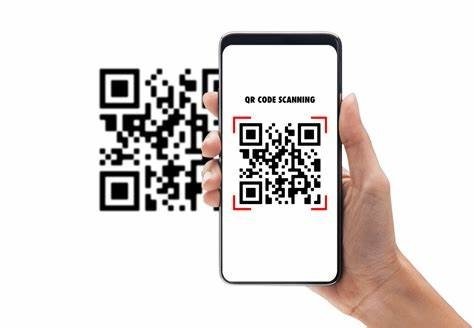Introduction:
Quick Response (QR) codes have become ubiquitous in our daily lives, seamlessly blending the physical and digital realms. Originally created in 1994 by Denso Wave, a subsidiary of Toyota, QR codes were initially used for tracking automotive parts. Since then, their functionality has expanded exponentially, finding applications in marketing, logistics, healthcare, education, and beyond. In this comprehensive guide, we will explore the intricacies of QR codes, their history, applications, technology, and future prospects.
Understanding QR Codes:
Definition: A QR code is a two-dimensional barcode that can store a variety of information, such as text, URLs, contact information, or other data types. Unlike traditional barcodes, QR codes can be scanned from any angle, making them versatile and user-friendly.
Components: QR codes consist of black squares arranged on a white square grid. These patterns encode data in both horizontal and vertical directions.
History and Evolution:
Origin: Denso Wave, a Japanese subsidiary of Toyota, developed QR codes in 1994 for tracking automotive parts. The company released the technology to the public domain, facilitating its widespread adoption.
Global Acceptance: QR codes gained global recognition in the 2010s, primarily due to increased smartphone usage. The integration of QR code scanners into smartphones allowed users to easily access information by simply pointing their device’s camera at the code.
Types of QR Codes:
URL QR Codes: Direct users to a specific website when scanned.
Text QR Codes: Encode plain text, often used for quick information retrieval.
Contact QR Codes: Store contact information, enabling users to save details directly to their phone.
WiFi QR Codes: Facilitate easy connection to a WiFi network without manual input.
Payment QR Codes: Popular in mobile payment systems, allowing secure and efficient transactions.
Applications:
Marketing and Advertising: QR codes are widely used in advertising to provide quick access to product information, promotions, or discounts.
Logistics and Inventory: QR codes streamline inventory management, shipment tracking, and product authentication.
Healthcare: In healthcare, QR codes are used for patient identification, accessing medical records, and vaccine passports.
Education: QR codes enhance the learning experience by providing easy access to supplementary materials, quizzes, and interactive content.
Technology Behind QR Codes:
Encoding: QR codes use various encoding schemes, such as alphanumeric, numeric, byte, and Kanji, depending on the type and content of the information being stored.
Error Correction: QR codes incorporate error correction techniques, ensuring data integrity even if the code is damaged or partially obscured.
Creating and Scanning QR Codes:
Generation: QR codes can be generated using online tools, dedicated software, or programming libraries. Users can customize the appearance and content of the code.
Scanning: Most smartphones come equipped with built-in QR code scanners in their camera apps. Additionally, standalone QR code scanner apps are available for various platforms.
Security Considerations:
Potential Risks: While QR codes are generally secure, malicious QR codes can redirect users to phishing websites or execute harmful actions.
Best Practices: Users should exercise caution and only scan QR codes from trusted sources. Security features, such as encryption and secure connections, are essential for applications involving sensitive information.
Future Trends:
Enhanced Integration: QR codes are likely to become even more integrated into our daily lives, with increased use in augmented reality, virtual reality, and the Internet of Things (IoT).
Dynamic QR Codes: The development of dynamic QR codes, which allow for real-time updates to the encoded information, will further expand their utility.
Conclusion:
QR codes have evolved from their humble beginnings as inventory trackers to becoming an integral part of our digital ecosystem. Their versatility, ease of use, and broad applications make QR codes a powerful tool for businesses and individuals alike. As technology continues to advance, QR codes are poised to play an
